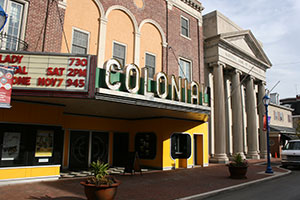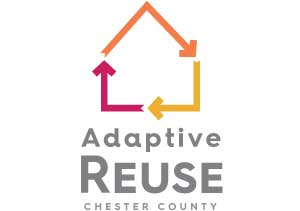Municipal Strategies
Municipalities can implement strategies to help accommodate, encourage, and promote adaptive reuse. Often, local regulations can serve as disincentives for reuse because they are primarily designed to regulate new construction. Accordingly, compliance with such regulations may be difficult or impossible for existing buildings and may not be necessary to protect public safety and welfare (which are the overriding goals of municipal zoning). A municipality seeking to lower barriers to adaptive reuse should consider implementing strategies in the checklist below.
Often, local regulations can serve as disincentives for reuse because they are primarily designed to regulate new construction.
Information-Sharing
While members of the public may have visited an adaptively reused building while enjoying an ice cream cone or an adult beverage, they may not be aware of the positive impact that may have resulted from the reuse of the host building. A community should utilize the tools they have to promote this strategy to their residents and business owners. An article (or series of articles) could be featured in a community newsletter and/or on a municipal website that celebrates adaptive reuse as a tool for historic preservation and economic development. If the community has an active historical commission, members should take the lead on creating these articles. In addition, the website could feature examples of adaptive reuses located within the community or the surrounding region. Communities can also include a link to this website and our Adaptive Reuse eTool.
Community Policy Update
A municipality's comprehensive plan sets the policy for growth and preservation. When a municipality updates its comprehensive plan, in accordance with the guidelines of Act 247, it should consider including a list of benefits associated with adaptive reuse and a plan recommendation that focuses on prioritizing adaptive reuse as it relates to historic preservation and economic development. The recommendation can be basic and to the point (Oxford Borough's recently adopted comprehensive plan action reads: Promote adaptive reuse of historic structures) or can be directly related to community objectives such as protection of community character, and/or expansion of economic development opportunities. Including adaptive reuse-specific policy can set the stage for related amendments to a community's land use ordinances and support the acquisition of related funding. Ideally, policy supporting adaptive reuse should be in place before a municipality updates its regulatory documents.
Building Codes

The National Bank Building (next to the Colonial Theatre) is an example of an adaptive reuse in a community that embraces the strategy, Phoenixville Borough.
Meeting municipal building codes designed for new buildings may be problematic for an existing building physically and financially and could derail an adaptive reuse project. Adopting provisions that allow flexibility in requirements for projects involving existing buildings is recommended. The Building Officials and Code Administrators (BOCA) National Existing Structures Code addresses this topic. This code provides model provisions for rehabilitations, considering constraints of existing buildings, while providing for public safety. Another model building code organization, the International Conference of Building Officials, produced The Uniform Construction Code (UCC), the purpose of which is to provide alternative safety methods to allow existing buildings to be preserved. If they have not already done so, municipalities should consider adopting either of these codes to allow flexibility and alternative solutions for reuse projects in meeting code requirements.
Amending Land Use Ordinances
In addition to local building code requirements, municipal zoning, and subdivision ordinances should be reviewed for their impact on and accommodation of adaptive reuse. Types of uses permitted within zoning districts and issues such as parking, density, setbacks, and site coverage need to be considered. The location and extent to which reuse can occur depends on an individual municipality. A municipality with vacant obsolete industrial buildings might consider reuse as a strategy to eliminate blight, stimulate economic development, and preserve older structures that have long been part of the community. To that end, the municipality might allow a wider variety of uses in these vacant structures and sites than a municipality with an active industrial area.
Update Use Regulations
District "use regulations" identify uses permitted in a zoning district. Uses are permitted by-right, by special exception, and by conditional use. By right uses do not require special permission or carry conditions as do special exception and conditional uses. If a municipality supports and/or promotes the adaptive reuse of existing buildings, an applicant should not be required to go before the governing body (Conditional Use) or the zoning hearing board (Special Exception) to move forward with adaptive reuse. The municipality should consider the uses that would be most suitable when updating their use regulations to further accommodate adaptive reuse. Urbanized areas generally permit a greater mixing of uses per district which can help encourage and permit reuse projects. Suburban areas may inadvertently discourage reuse due to the predominance of single-use zoning which can be addressed by permitting conversion of single-family uses to multi-family.
Regulatory Relief and Incentives
To further promote adaptive reuse, a community can provide incentives and regulatory relief to applicants who reuse a historic structure and, thereby, meet community objectives. This can include an expansion of uses permitted in an adaptively reused structure. Further, the community can consider relief or a reduction in regulations for required setbacks, percentage of impervious coverage, and parking requirements. Meeting parking requirements is frequently a problem since the sites are already established. Expanding ways in which to fulfill these requirements, e.g. off-lot and shared parking facilities, can help in the reuse of buildings.
The municipality should cultivate a development climate that openly promotes adaptive reuse.
Other Incentives
Municipalities can provide other types of incentives such as infrastructure improvements, assistance with obtaining grants, provision of long-term leases in publicly owned buildings, participation in the development of programs such as low-interest loans or revolving loan funds, or the provision of some form of property tax abatement. An important consideration is a climate that openly encourages the reuse of existing buildings and provides a high level of municipal and community interest and support of reuse.
Zoning provisions that contribute to the economic feasibility of reusing a building for housing include allowing greater densities to maximize the use of floor space, home offices in apartments, or other types of multi-family dwellings. An example of how zoning requirements can be updated to help encourage reuse is by including flexibility in parking requirements for buildings that will be adaptively reused.
Historic District
Reuses located in a historic district may be regulated by design guidelines. If no major exterior changes are made, the guidelines are generally not an issue because they are usually based on existing exterior building features in that locality.


